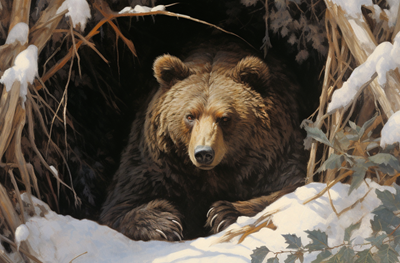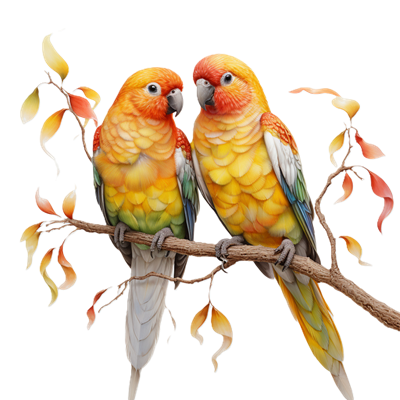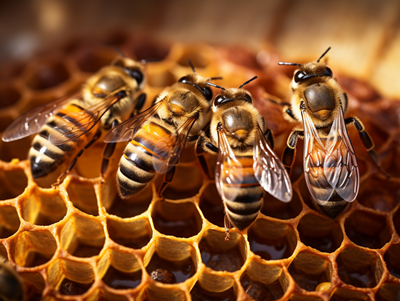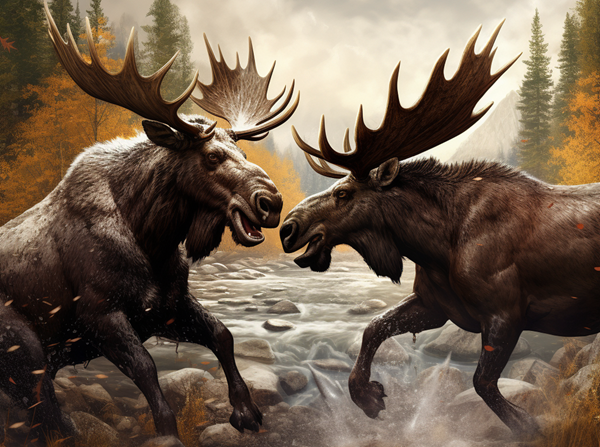Patterns of Behavior

Behavioral Cycles
-
Circadian Rhythms: Many animals exhibit daily behavior cycles tied to the 24-hour day-night cycle. Activities like feeding, sleeping, and movement often follow this pattern. Nocturnal animals are active at night, diurnal animals during the day, while crepuscular animals are active during dawn and dusk.
-
Reproductive Cycles: Species often have specific times or seasons when they engage in mating behaviors. This could involve courtship displays, mating rituals, or migrations to breeding grounds. The timing might be influenced by factors such as temperature changes, photoperiod, or hormonal shifts.
-
Migration: Some animals exhibit cyclic behaviors related to migration, moving from one habitat to another. Birds, fish, insects, and mammals may migrate in search of better feeding grounds, breeding sites, or more suitable climates.
-
Hibernation and Torpor: Many species have adapted to conserve energy during unfavorable conditions by entering periods of reduced metabolic activity. Hibernation (long-term) and torpor (short-term) are cycles where animals lower their metabolic rate, body temperature, and activity to survive harsh seasons or lack of resources.
-
Feeding Cycles: Animals often have specific patterns related to feeding and foraging. Some may have regular feeding times during the day or night, while others might adjust their feeding behaviors based on seasonal changes in food availability.
-
Social Behavior Cycles: Social animals often have cyclic patterns related to social interactions, dominance displays, territorial behaviors, and group dynamics. These cycles can impact the structure and functioning of the social group.
-
Daily Activity Cycles: Apart from circadian rhythms, animals might have specific times of increased or decreased activity. For instance, predators may be more active during certain times of the day to hunt, while prey animals might exhibit heightened vigilance during these periods.
Courtship
-
Visual Displays: Many species use visual cues to attract a mate. This can involve vibrant colors, elaborate body postures, or movements. For example, male peacocks display their iridescent tail feathers in an impressive fan to attract females.
-
Vocalizations: Animals often use sounds and calls as a part of their courtship rituals. Birds sing complex songs, frogs croak, and mammals emit specific mating calls to attract potential partners. These vocalizations can convey information about an individual's fitness and availability.
-
Gift Giving: Some species engage in gift-giving behaviors as part of courtship. Male bowerbirds construct intricate bowers and adorn them with objects like shells, feathers, or colorful items to impress females.
-
Dances and Movements: Certain animals perform intricate dances or movements as a part of courtship. These may involve synchronized movements, specific patterns, or exaggerated displays of agility. For instance, the courtship dance of cranes involves coordinated movements and calls.
-
Pheromone Release: Chemical signals known as pheromones play a role in courtship behaviors. Animals release pheromones to attract mates or signal readiness for breeding. These chemical cues can be perceived through smell or other sensory organs.
-
Aggressive Courtship: In some species, courtship involves aggressive behaviors. Male competition for mates might involve fights or displays of dominance, where the winner gains the opportunity to court a female.
-
Building and Nesting: Constructing elaborate nests or structures can be a part of courtship behaviors in many species. Males may build nests to attract females or to demonstrate their ability to provide a suitable environment for offspring.
- Courtship Feeding: Some animals engage in sharing food as a part of courtship. This behavior can establish bonds between mates and demonstrate the ability to provide resources.
Social Behavior
-
Communication: Animals use various forms of communication to interact with one another. This can include vocalizations, body language, visual displays, scents, and even electrical signals. Communication helps in conveying information about mating, territory, danger, food sources, and social status.
-
Cooperative Hunting or Foraging: Some species engage in cooperative behaviors while hunting or foraging for food. Wolves, lions, and certain bird species form groups and work together to increase hunting success. This cooperation allows them to tackle larger prey or navigate complex environments more effectively.
-
Parental Care: Many animals exhibit social behaviors related to caring for their offspring. This can involve feeding, protecting, teaching, and nurturing the young until they are independent. Some species have highly developed parental care systems, while others rely on communal care within social groups.
-
Hierarchy and Dominance: Social animals often establish hierarchies within their groups, determining the social rank and access to resources. Dominance behaviors, such as displays of aggression or submission, help maintain the social order and reduce conflict within the group.
-
Territoriality: Animals frequently defend territories, marking boundaries and using displays or aggression to deter intruders. Territory establishment helps in securing resources like food, mates, and shelter.
-
Altruism and Reciprocity: Certain species display altruistic behaviors, where individuals may sacrifice personal gain for the benefit of others in the group. Reciprocal altruism involves individuals exchanging favors or assistance, creating a system of mutual benefit.
-
Mating and Courtship: Social behaviors are often central to mating rituals and courtship displays. These behaviors can involve elaborate displays, rituals, and interactions between potential mates to ensure successful reproduction.
-
Social Learning: Animals, particularly highly intelligent species like primates and cetaceans, exhibit social learning by observing and imitating behaviors of others in their social group. This can include acquiring new feeding techniques, communication methods, or problem-solving skills.
-
Migration and Group Movement: Many species, such as birds and mammals, migrate or move in groups. These collective movements often involve coordination and social interactions to ensure the safety and success of the journey.
Territorial Behaviors
-
Territory Marking: Animals use various methods to mark their territories, including scent marking, visual displays, vocalizations, and physical boundary markings. Scent marking through urine, feces, or gland secretions is particularly common, allowing individuals to communicate their ownership of an area.
-
Defense Against Intruders: Territorial animals often display aggressive behaviors towards intruders to deter them from entering their territory. This can involve vocal warnings, threatening displays, physical combat, or actual fights to defend the territory.
-
Resource Protection: Territories serve as a means to protect valuable resources such as food, nesting sites, water sources, or mates. By defending a specific area, animals ensure a consistent supply of essential resources for survival and reproduction.
-
Territoriality in Mating: Territories can play a crucial role in mating and reproductive success. Establishing a territory might attract potential mates, allowing individuals to display their fitness, attractiveness, or ability to provide suitable conditions for offspring.
-
Territorial Size and Shape: Territory size and shape can vary based on species, population density, resource availability, and individual fitness. Some territories may encompass only a small area, while others can be extensive and overlap with neighboring territories.
-
Territoriality and Social Structure: Territorial behaviors often influence the social structure of animal groups. Dominance hierarchies and territorial boundaries help maintain order within a population and reduce conflicts over resources.
-
Seasonal Changes and Territoriality: In some species, territorial behaviors can change with seasons. For instance, during mating seasons or breeding periods, animals might become more aggressive or defensive in protecting their territories.
-
Territorial Displays: Animals may use specific behaviors or displays to mark their territory or assert dominance within it. This might involve visual displays like posturing, raising crest feathers, or performing ritualized movements.
Resources on Animal Behavior
Animal Behavior – Slides and Notes Outline
Territorial Behavior in Crickets – mark and observe crickets as they interact with each other
Isopod Behavior Lab (with lab report) – AP Lab 11 modified experiments with pill bugs




